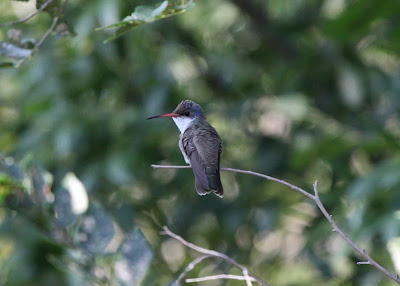There is a scene in the beginning of Clint Eastwood's Unforgiven, where he is chasing a pig around trying to get it out of the pen it is in. It's both sad and hilarious at the same time. Age seems to make the difficult impossible. I had to check the IMDB, but shocking to my own sense of youth, I am three years older than Clint Eastwood was when he filmed Unforgiven.
Last night Christine heard some banging sounds outside the office. I thought it might be a Javelina trying to get into our bird seed bin, but we looked all around our property (with flashlights in hand) and didn't see anything. Finally we went into the oasis (which is walled -- essentially to keep the bunnies out). Occasionally we get a Bobcat in the Oasis but they are so quiet that didn't seem likely this time. Finally I saw it, yes, a Javelina standing in the middle of the flower bed staring at me. The first thing that came to mind was "how did this Javelina get into our oasis?" All the gates were closed. This wasn't Dumbo the Flying Elephant, it was a pig. After a minute of two of staring at each other she started eating our agaves and aloes. This was unacceptable behavior as far as I was concerned, so I began the chase. I opened all three gates and tried to "shoo" her out. The difficult now seemed impossible. She kept running around, up the stairs to the upper level of the patio, then down around and through the flower beds. She continuously ran PAST the gates without the slightest thought that they represented an escape route. She kept running around the pool on his circuit. I could just imagine her falling into the pool --- what would I do then. This was a 40 or so pound Javelina with a potentially nasty bite. Christine is watching my impersonation of Clint Eastwood not knowing whether to laugh or cry. Finally, after 20 minutes of huffing and puffing the Javelina went through one of the gates and out into the world. As for me, I was too exhausted to be embarrassed.
Was it an Academy Award performance?? I think Clint is pretty safe. Good thing I have a day job.
And as for the mystery of how the Javelina got into the oasis. I'm afraid we'll never know. After all, I am not Columbo either.
Although too dark to get a photo, here is a Javelina photo from earlier in the day:
 |
| Female Javelina |






















































